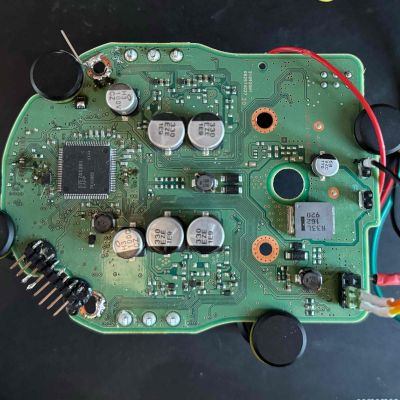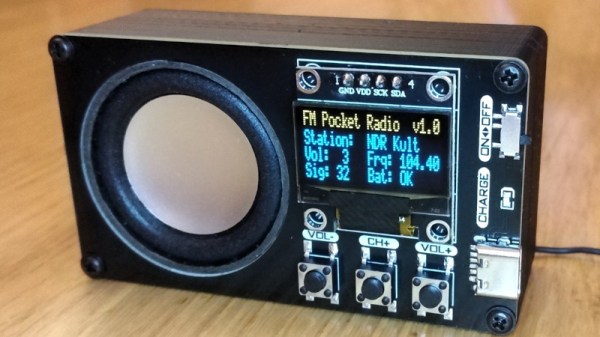Do humanoid robots dream of electric retirement? Who knows, but maybe we can ask Boston Dynamics’ Atlas HD, which was officially retired this week. The humanoid robot, notable for its warehouse Parkour and sweet dance moves, never went into production, at least not as far as we know. Atlas always seemed like it was intended to be an R&D platform, to see what was possible for a humanoid robot, and in that way it had a heck of a career. But it’s probably a good thing that fleets of Atlas robots aren’t wandering around shop floors or serving drinks, especially given the number of hydraulic blowouts the robot suffered. That also seems to be one of the lessons Boston Dynamics learned, since Atlas’ younger, nimbler replacement is said to be all-electric. From the thumbnail, the new kid already seems pretty scarred and battered, so here’s hoping we get to see some all-electric robot fails soon.
Extracting SecOC Keys From A 2021 Toyota RAV4 Prime
With the recently introduced SecOC (Secure Onboard Communication) standard, car manufacturers seek to make the CAN bus networks that form the backbone of modern day cars more secure. This standard adds a MAC (message authentication code) to the CAN messages, which can be used to validate that these messages come from a genuine part of the car, and not from a car thief or some third-party peripheral.
To check that it isn’t possible to circumvent SecOC, [Willem Melching] and [Greg Hogan] got their hands on the power steering (EPS) unit of a Toyota RAV4 Prime, as one of the first cars to implement this new security standard.

As noted by [Willem], the ultimate goal is to be able to run the open source driver assistance system openpilot on these SecOC-enabled cars, which would require either breaking SecOC, or following the official method of ‘rekeying’ the SecOC gateway.
After dumping the firmware of the EPS Renesas RH850/P1M-E MCU via a voltage fault injection, the AES-based encryption routines were identified, but no easy exploits found in the main application. This left the bootloader as the next target.
Ultimately they managed to reverse-engineer the bootloader to determine how the update procedure works, which enabled them to upload shellcode. This script then enabled them to extract the SecOC keys from RAM and send these over the CAN bus. With these keys the path is thus opened to allow any device to generate CAN messages with valid SecOC MACs, effectively breaking encryption. Naturally, there are many caveats with this discovery.
Continue reading “Extracting SecOC Keys From A 2021 Toyota RAV4 Prime”
Hackaday Links: January 21, 2024
Have you noticed any apps missing from your Android phone lately? We haven’t but then again, we try to keep the number of apps on our phone to a minimum, just because it seems like the prudent thing to do. But apparently, Google is summarily removing apps from the Play Store, often taking the extra step of silently removing the apps from phones. The article, which seems to focus mainly on games, and has a particular bone to pick about the removal of RPG Wayward Souls, isn’t clear about how widespread the deletions are, or what exactly the reason behind the removals could be. But they sure are exercised about it, and rightly so since in some cases the deleted games have actually been paid for by the users, and Google pretty much says that if you think you’re getting a refund, think again. They make some interesting points, such as this being the very definition of larceny, while also acknowledging that in all likelihood Google has a get-out-of-jail-free card buried in some EULA somewhere permitting them to do exactly what they’re doing. Google’s gonna Google, right?
A Very 21st Century Receiver For A Very 20th Century Band
The FM broadcast band has been with us since the middle of the 20th century, and despite many tries to unseat it, remains a decent quality way to pick up your local stations. It used to be that building an FM broadcast receiver required a bit of RF know-how, but the arrival of all-in-one receiver chips has made that part a simple enough case of including a part. That’s not to say that building a good quality FM broadcast receiver in 2024 doesn’t involve some kind of challenge though, and it’s one that [Stefan Wagner] has risen to admirably with his little unit.
Doing the RF part is an RDA5807MP single chip radio, but we’d say the center of this is the CH32V003 RISC-V microcontroller and its software. Twiddling the dial is a thing of the past, with a color display and all the computerized features you’d expect. Rounding it off in the 3D printed case is a small speaker and a Li-Po pouch cell with associated circuitry. This really is the equal of any commercially produced portable radio, and better than many.
Even with the all-in-one chips, there’s still fun in experimenting with FM the old way.
Hackaday Podcast 221: The Future Of The Raspberry Pi, Sniffing A Toothbrush, Your Tactical Tool Threshold
Editors Elliot Williams and Tom Nardi are back in the (virtual) podcast studio to talk the latest phase of the 2023 Hackaday Prize, the past, present, and future of single-board computers, and a modern reincarnation of the Blackberry designed by hardware hackers. They’ll also cover the current state of toothbrush NFC hacking, the possibilities of electric farm equipment, and a privately funded satellite designed to sniff out methane. Stick around till the end to find out if there really is such a thing as having too many tools.
Check out the links below if you want to follow along, and as always, tell us what you think about this episode in the comments!
Hackaday Links: May 21, 2023
The reports of the death of automotive AM radio may have been greatly exaggerated. Regular readers will recall us harping on the issue of automakers planning to exclude AM from the infotainment systems in their latest offerings, which doesn’t seem to make a lot of sense given the reach of AM radio and its importance in public emergencies. US lawmakers apparently agree with that position, having now introduced a bipartisan bill to require AM radios in cars. The “AM for Every Vehicle Act” will direct the National Highway Transportation Safety Administration to draw up regulations requiring every vehicle operating on US highways to be able to receive AM broadcasts without additional fees or subscriptions. That last bit is clever, since it prevents automakers from charging monthly fees as they do for heated seats and other niceties. It’s just a bill now, of course, and stands about as much chance of becoming law as anything else that makes sense does, so we’re not holding our breath on this one. But at least someone recognizes that AM radio still has a valid use case.
Hackaday Podcast 219: Lots Of Lasers, Heaps Of Ham Radio, And Breaching The Blood Brain Barrier
Elliot and Dan teamed up for the podcast this week, bringing you the week’s sweetest hacks. And news too, as the ESA performed a little percussive maintenance on a Jupiter-bound space probe, and we learned about how to get an Orwellian free TV that exacts quite a price. We talked about Bitcoin mining two ways, including a way to put all that waste heat to good use — just don’t expect it to make good financial sense. Why would you stuff zip ties into a hot glue gun? It might just help with plastic repair. Lugging a tube transmitter up a mountain doesn’t sound like a good idea, but with the right design, it’s a lot of fun — and maybe you’ll be better able to tap into Schumann resonances while you’re up there.
Check out the links below if you want to follow along, and as always, tell us what you think about this episode in the comments!















